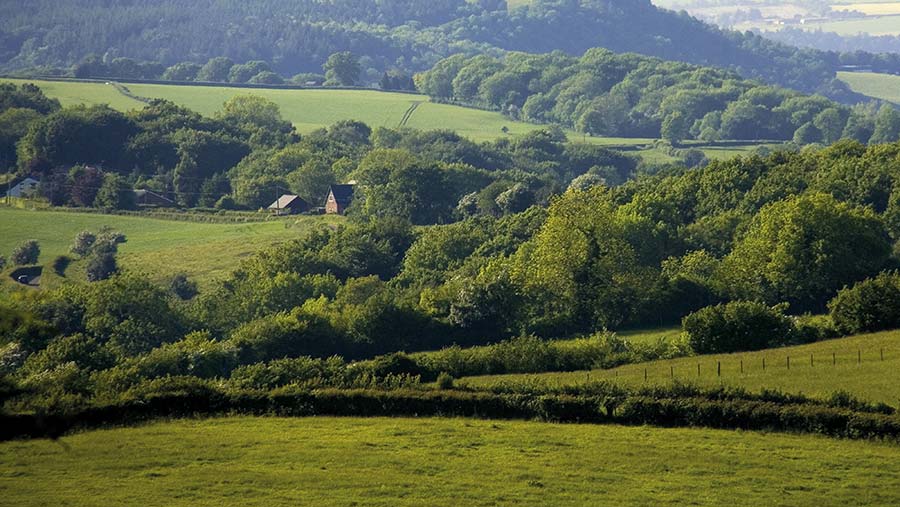Opinion: ELM must deliver for trees, biodiversity and farming
 © David Hughes/Adobe Stock
© David Hughes/Adobe Stock Following December’s disappointing announcement on the Sustainable Farming Incentive (SFI), we now await details on the Local Nature Recovery and Landscape Recovery components of the Environmental Land Management (ELM) scheme.
About the author

Helen Chesshire is lead farming advocate for the Woodland Trust.
Here she sets out why meaningful government backing is needed to deliver for nature and farming.
ELM should reward land managers for delivering environmental benefits and helping to meet key climate and nature targets, including cutting greenhouse gas emissions by 78% by 2035 and creating 30,000ha of new woodland by 2025.
With 68% of land in England under agriculture, farming has a key role to play, although this must be balanced with the need to produce food.
See also: Trees can earn more than wheat under new planting scheme
Just 7% of Britain’s native woodlands are in good ecological condition, so protecting existing trees and woods on farmland is essential. Of the 382,000ha of farm woodland in England, much is unmanaged.
Most trees outside woods are on farmland and vital for biodiversity, with oak alone supporting 2,300 species.
We welcome the inclusion of a Farm Woodland Standard in the SFI pilot, but question why the rollout has been delayed until 2025.
Similarly, the grassland and arable standards being piloted include protection for in-field trees, but we are concerned that these appear to have been dropped from the SFI 2022 rollout.
Every farm has hedgerows, which could be an easy win in delivering public goods and providing shade, pollinator habitat and soil management.
We want to see support in ELM for taller, wider hedgerows with flowering plants in the base and hedgerow trees. Anything less will fall short of what is needed.
Despite ambitious targets, in the last two years the government has managed to create only 4,500ha of new woodland in England.
This leaves a lot still to be planted, and a significant proportion will have to be on farmland.
How this is achieved without unintended consequences, such as increasing land values and seeing tenants pushed off their land, must be addressed in the design of ELM.
Agroforestry has huge potential to simultaneously tackle the nature and climate crises while enabling sustainable food production.
However, at the moment only 3% of agricultural land is used for agroforestry.
Eight years of running our Trees for Your Farm grant shows that farmers want to invest in agroforestry, but need advice, training and financial incentives. ELM must provide these.
The right trees need to be planted now and in the right place. For some, diversification into woodland creation will make business sense and the new English Woodland Creation Offer appears to offer favourable grants.
Yet, anecdotally, farmers tell us they are being put off by the forestry language and process, and are cautious that if they act now, they might be penalised when ELM is rolled out.
Promises that this won’t be the case can only go so far; Defra secretary George Eustice must clearly set out how ELM will support farmers to create and manage woodland.
To be attractive to farmers, incentives must take account of costs as well as the environmental benefits delivered and the need for advice and training.
We know that farmers are eager to engage with trees, but they need to be supported. ELM must incentivise farmers to protect, manage and expand the diverse range of woody assets on farmland.
There is no time to lose. We want more ambition and speed from government. Hopefully Mr Eustice will have more to say on this soon.
